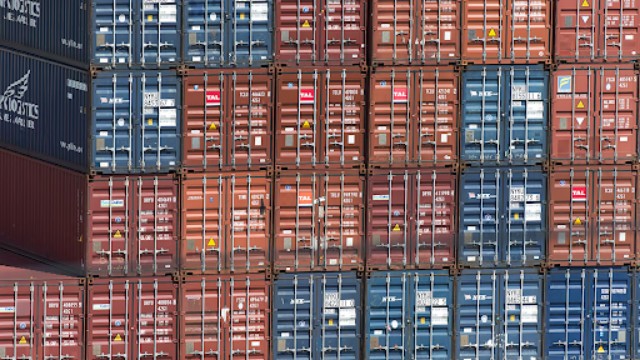
Workers supervise progress at a construction site in Montreal on August 20, 2024. (Ivanoh Demers/Radio-Canada)
Canada’s jobless rate climbed to 6.9% in April, marking the highest level seen since before the COVID-19 pandemic, according to Statistics Canada. The last time unemployment reached this figure outside pandemic conditions was in January 2017.
Though the country technically added 7,400 jobs in April, most of those positions came from temporary hires in the public sector — specifically for the federal election. Private-sector job growth was limited, with notable increases only in finance, insurance, real estate, and leasing sectors.
But any small gains were heavily outweighed by job losses elsewhere. Manufacturing suffered the most, shedding 31,000 jobs as trade tensions with the U.S. took a toll. The wholesale and retail trade sectors also lost 27,000 jobs combined.
“These sectors are especially sensitive to international trade changes. The April data shows real evidence of the trade war’s impact,” said Brendon Bernard, senior economist at job site Indeed.
The country would’ve faced a net job loss of over 30,000 if not for the temporary hiring linked to the election.
Ontario was hit hardest, losing 33,000 manufacturing jobs — the largest decline among all provinces. Windsor, known for its automobile industry, saw its unemployment rate spike to 10.7% after a U.S. car tariff came into effect.
This rate hike brings Canada back to where it was in November 2024 and reflects continued strain in the job market. In March, the unemployment rate stood at 6.7%.
The numbers also highlight growing struggles for young workers. More men aged 15–24 began looking for work, pushing the unemployment rate for this group slightly higher.
People looking for jobs in general are having a tougher time. According to Statistics Canada, a higher share of workers who had jobs in March were laid off by April. About 0.7% of those employed in March found themselves unemployed the next month.
Despite all this, average hourly wages in April still grew by 3.4% compared to last year, reaching $36.13 — though this is a slight slowdown from March’s 3.6% rise. Meanwhile, total hours worked rose 0.4% in April, which is nearly 1% higher than a year ago.
Still, economists say the overall picture isn’t encouraging. “There’s no need to dig deep — this report clearly shows the economy is weakening,” said Doug Porter, chief economist at the Bank of Montreal.
He added that the impact of tariffs is already clear, and warned the Bank of Canada may now be more likely to lower interest rates by 0.25% in June.















